Omakase Sakurako (Los Angeles, CA)
Sushi Sakurako
351 E 2nd St, Los Angeles, CA 90012
213-400-6264
www.omakasesakurako.com
Sun 03/31/2024, 07:50p-09:30p

One of the latest entrants to SoCal's upscale Japanese dining scene is Downtown's Omakase Sakurako (おまかせ 桜子), which I'd been wanting to try ever since it grand-opened on November 22nd last year. The place is situated inside the former Japanese Village Plaza home of Komasa, which shuttered in October 2022 after 32 years in business, as owner Minoru Motoyama wanted to retire. Curiously, Sakurako is owned by none other than Kimiyasu Enya of Sushi Enya fame. However, you won't see him behind the counter here. Rather, the place is helmed by Head Chef Akira Yoshida, with support from Master Chef Tatsuki Kurogi and Pastry Chef Shota Takaki.
About the Chefs: Yoshida Akira was born in September 1996, and began his culinary career at the age of 18 at a sushi spot in Saitama. From there, he worked his way around several sushi-ya and tempura-ya in Japan, then relocated to Germany in early 2019 to join the team at The Sakai in Frankfurt. However, the place closed temporarily due to the pandemic, and during this period, Yoshida found employment at the much more casual Sakura Sushi Café. He ended up returning to Japan in November 2020, but eventually decided to move to the US, arriving in LA in October 2022. The motivation for the move was so that he could run Sakurako, but before the restaurant could open, he did work at Enya locations in both Pasadena and Beverly Grove.
Kurogi Tatsuki, meanwhile, started cooking when he was 16, inspired by his father, who was also a chef. He spent most of his career at kaiseki and kappo restaurants in the Kyoto and Osaka area, and most notably, trained at Naniwa Kappo Kigawa and the Nadaman outpost at Teikokuhoteru Osaka. Finally, we have Takaki Shota, who commenced his French pastry training at the age of 18, and worked for around a decade in Kumamoto as a pâtissier.

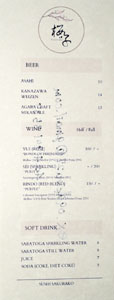

Sakurako's sushi-centric menu was priced at $250 a head, with a $100 deposit required on Tock. The night's omakase is pictured above (a printed menu is a nice touch that more places should implement), along with the restaurant's small selection of beer, wine, and sake. Corkage was $80 a pop. Click for larger versions.

Here we see the place setting, replete with an oshibori that was nicer than most.
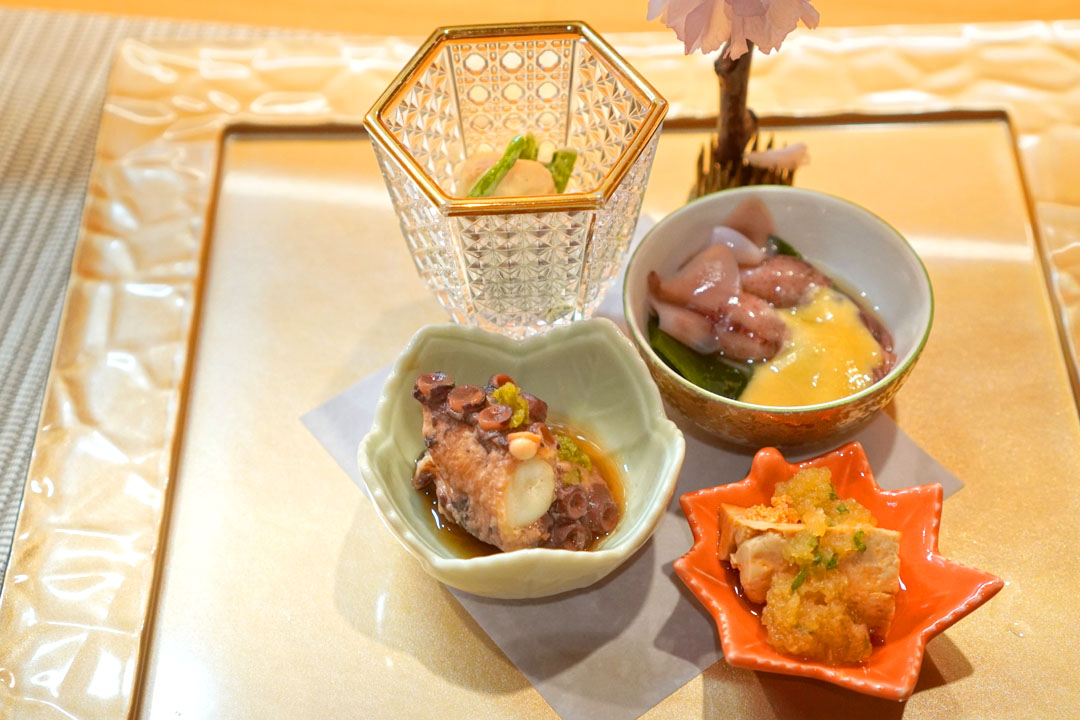
1: 先付 Amuse | chef's seasonal special
Our meal kicked off with a quartet of sakizuke, courtesy of Kurogi-san. I began with the octopus, which ate soft and savory, with a fantastic counterpoint in the form of the yuzukosho's sour-spicy punch. Next were cuts of sweet, springy shrimp, paired with bitter mizuna and a wonderfully tangy mustard sauce. Third was the hotaruika, supple, squishy, subtly saline firefly squid that were perked up by a super zingy sumiso sauce and the heat of wasabi. Finally, we had a classically rich, creamy ankimo, set against traditional accoutrements of ponzu and grated daikon. Overall, quite a promising start.
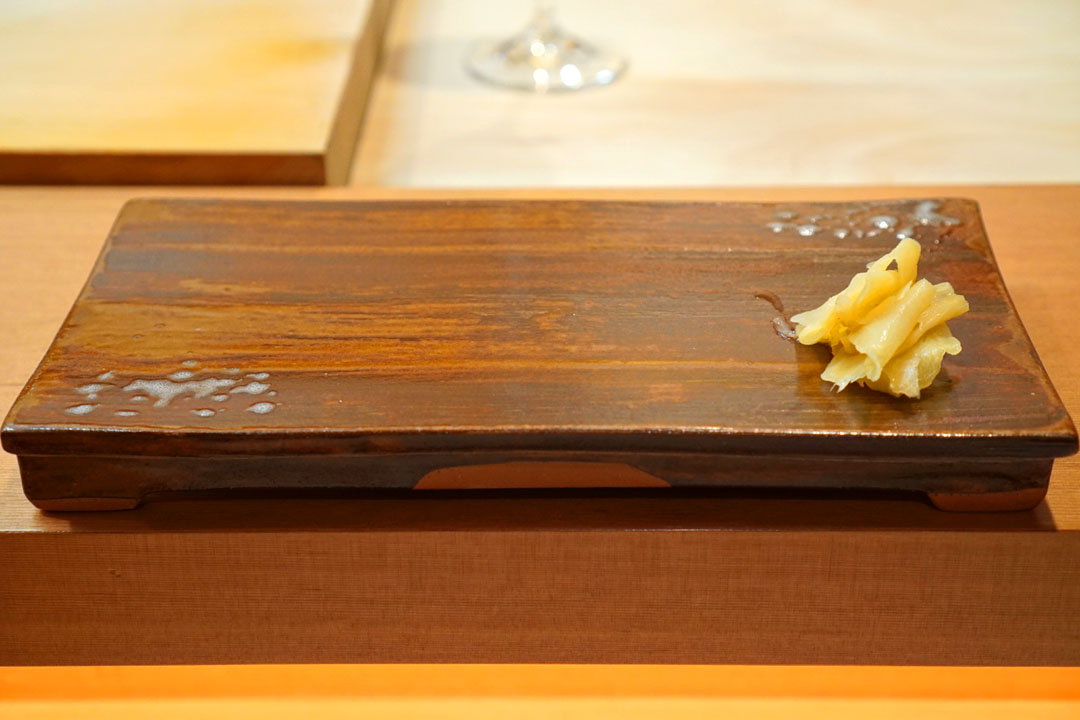
With the appetizers dispensed with, our geta were christened with some ginger.

2: 春子鯛 Kasugodai
Young sea bream is a signifier of the spring season, so it felt very appropriate to start with it tonight. I loved its soft yet "snappy" consistency, while the fish's subdued sweetness was paired with the potent sting of wasabi and the savoriness of shari on the back end.
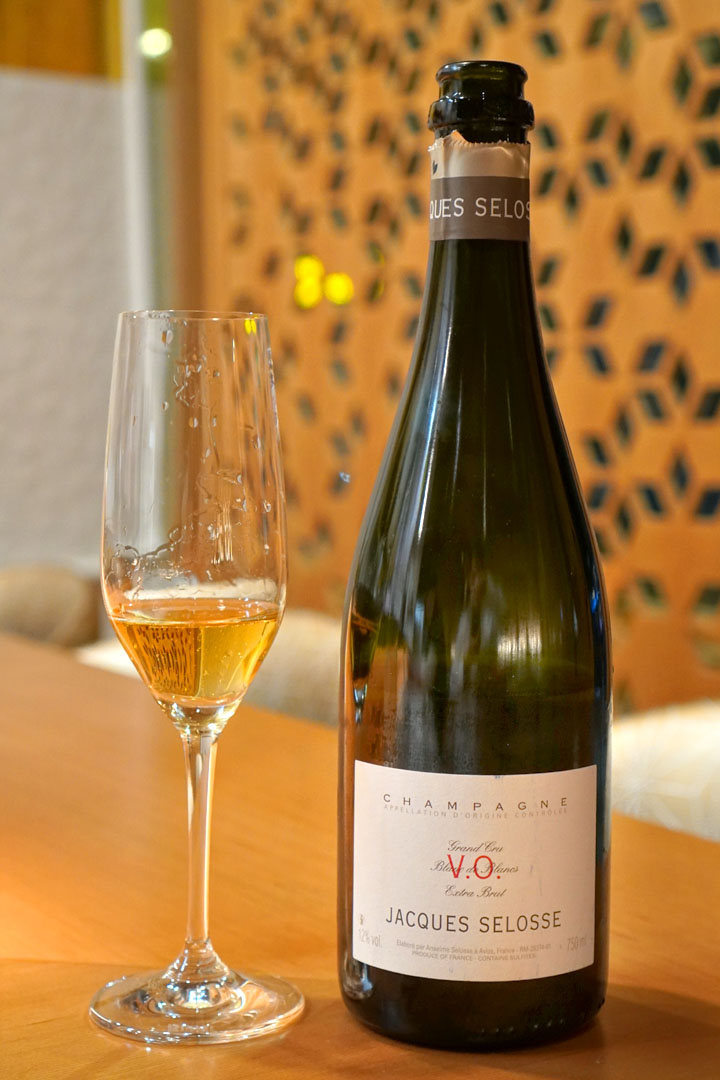
To drink, we brought along a bottle of the Jacques Selosse V.O. Blanc de Blancs Extra Brut. The Champagne had a glorious nose filled with rich, concentrated orchard fruits and just a slight tinge of funk. On the palate, I found the wine oxidative and distinctly nutty, but with a touch of toffee and a palpable base of yellow fruits that only got more intense as the bubbly warmed. Delicious, and of the best sparklers I've had in a while.
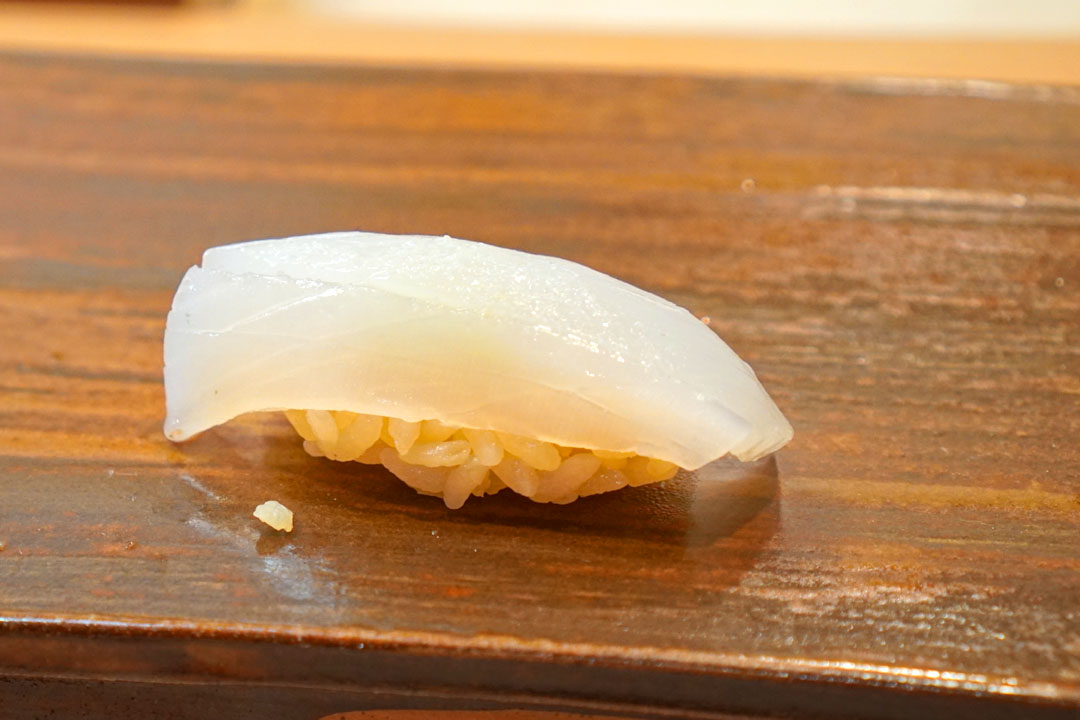
3: 烏賊 Ika
Japanese squid showed off a gratifyingly dense-yet-yielding texture, and was smartly accented by pinpricks of salt.

A wetted napkin was provided, as we were encouraged to use our fingers for the nigiri.
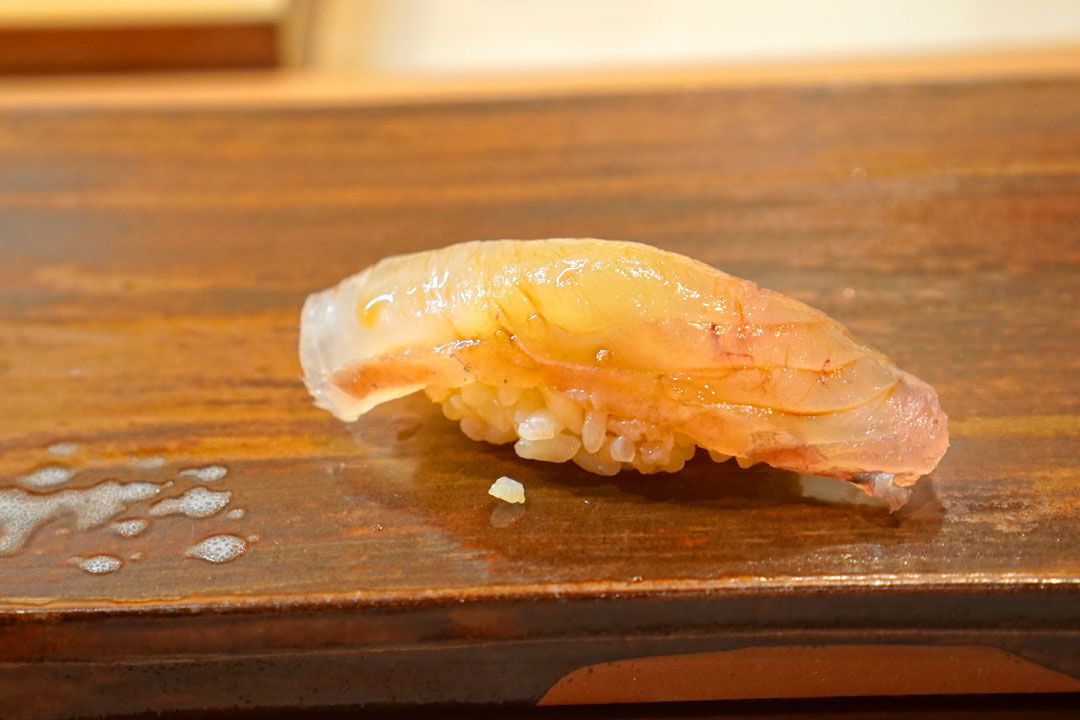
4: 平目 Hirame
Wild halibut had a tender, but still substantial mouthfeel, along with a great nuttiness that made a lot of sense with the rice's vinegary tang.
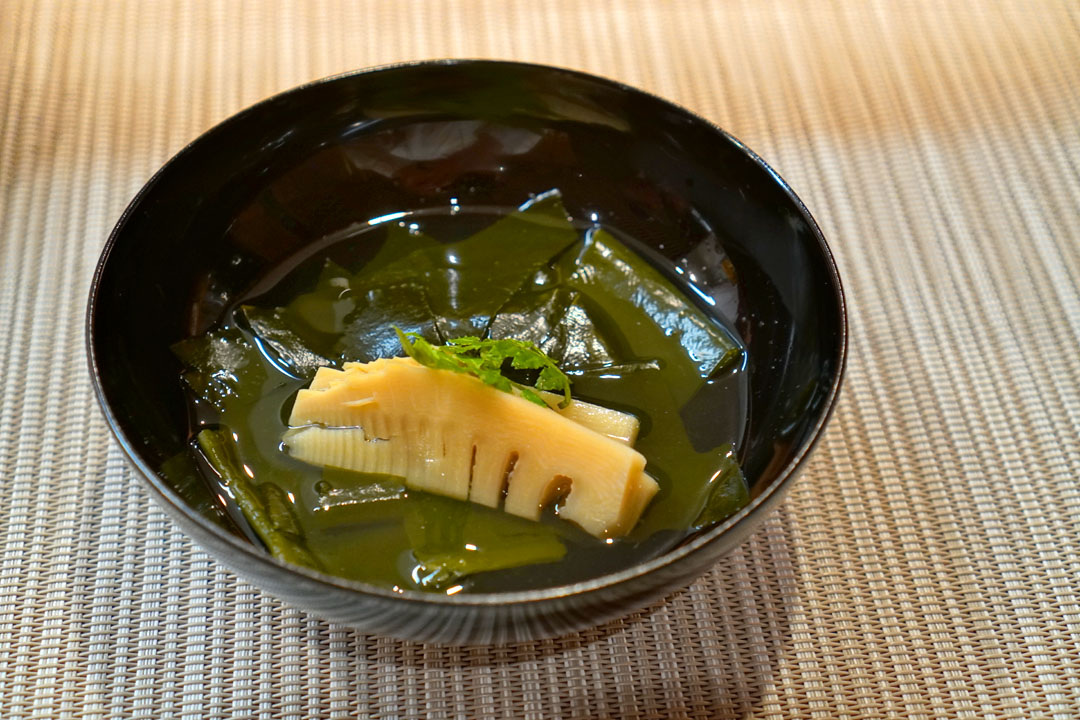
5: 吸物 Soup | Bamboo shoot & wakame
Our suimono course presented a clear soup loaded with briny sheets of wakame and cuts of delightfully crunchy Kagoshima bamboo. The dish was accented by the pepperiness of kinome, which paired especially well with the Champagne above.
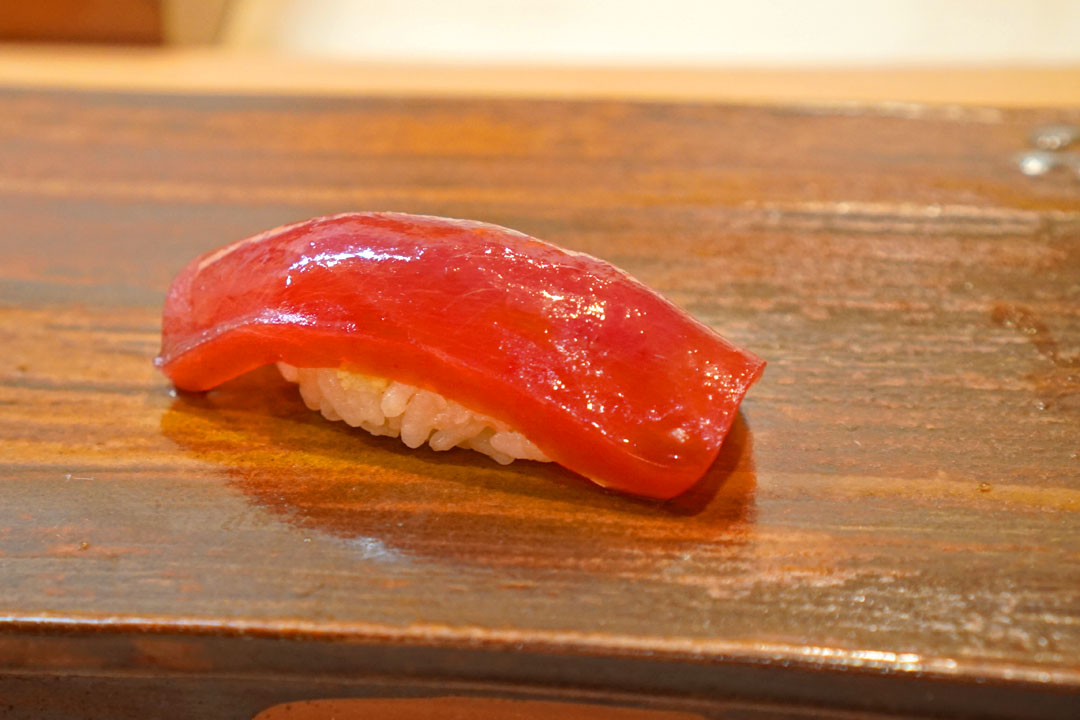
6: 赤身 Akami
Bluefin from Miyagi Prefecture was used for all our tuna courses tonight. We started with this soft, slick cut of red meat, which was teeming with plenty of umami, so the contrast offered up by the sushi rice was much appreciated.
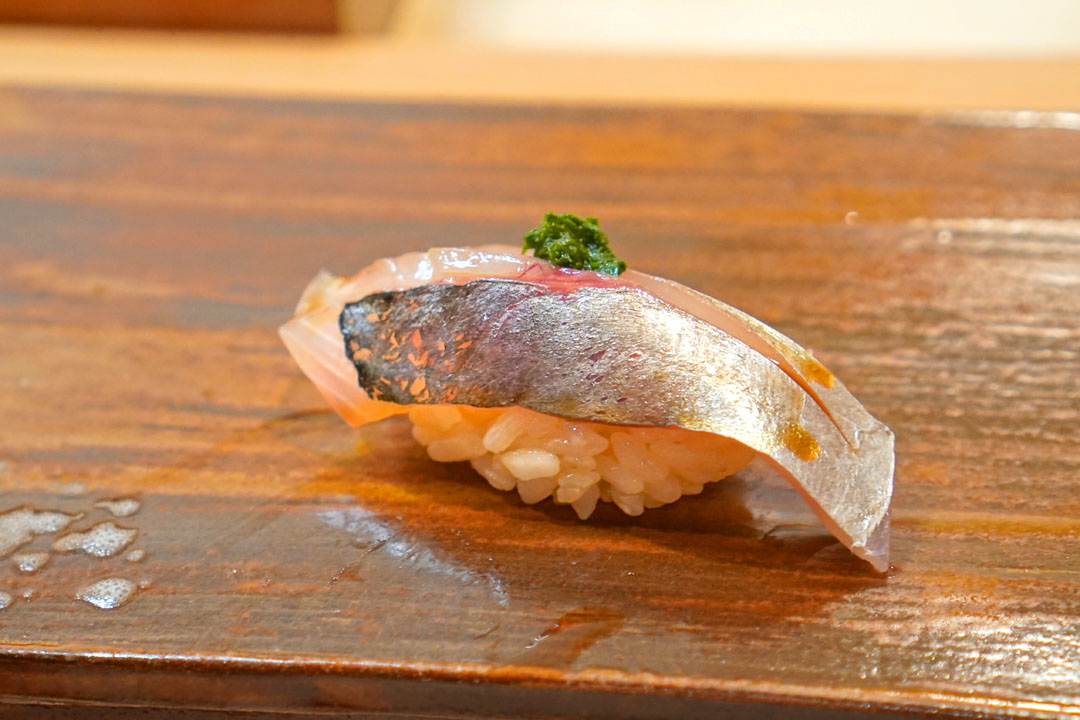
7: 鯵 Aji
The mackerel was a favorite of mine. I was a big fan of the fish's firm, almost crunchy mouthfeel, while its refined brine married perfectly with its zesty topping of grated onion-ginger juice.
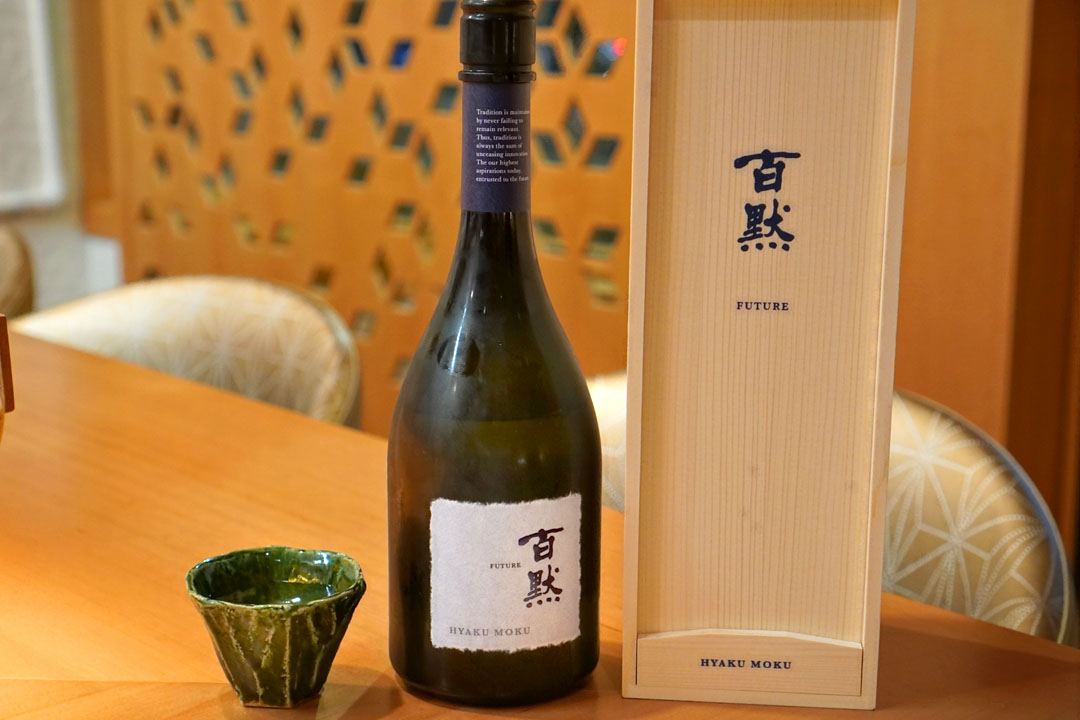
For our second beverage, we chose something off Sakurako's sake list, the 百黙 Hyakumoku Future [$350], a Yamadanishiki-based, 35% seimai-buai junmai daiginjo from Hyogo Prefecture's Kiku-Masamune Shuzo. Aromas recalled candied tropical fruits, but offset by a shiso-like freshness that I quite fancied. In terms of taste, I found bubblegum-y notes, but with a spicy backbone and further elements of rich, ricey umami. An apt pairing with the food.
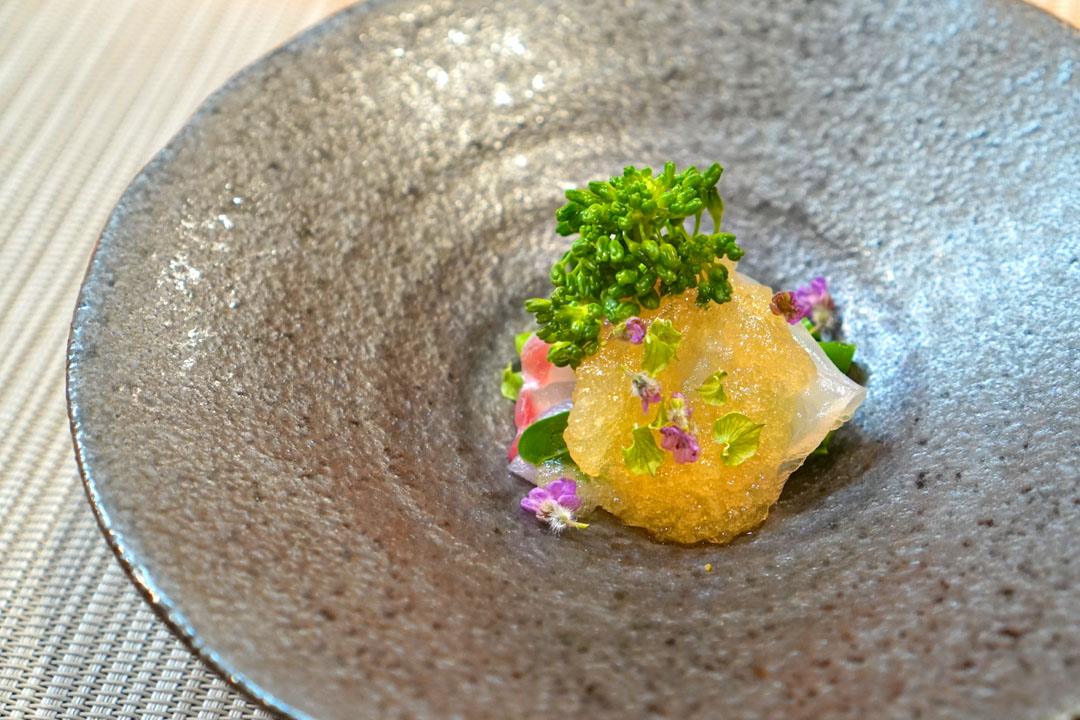
8: 刺身 Sashimi | red snapper
The sashimi was pretty stellar, the tai arriving silky smooth, its delicate flavors joined by bitter greens, shiso flowers, and a tangy ume dressing.
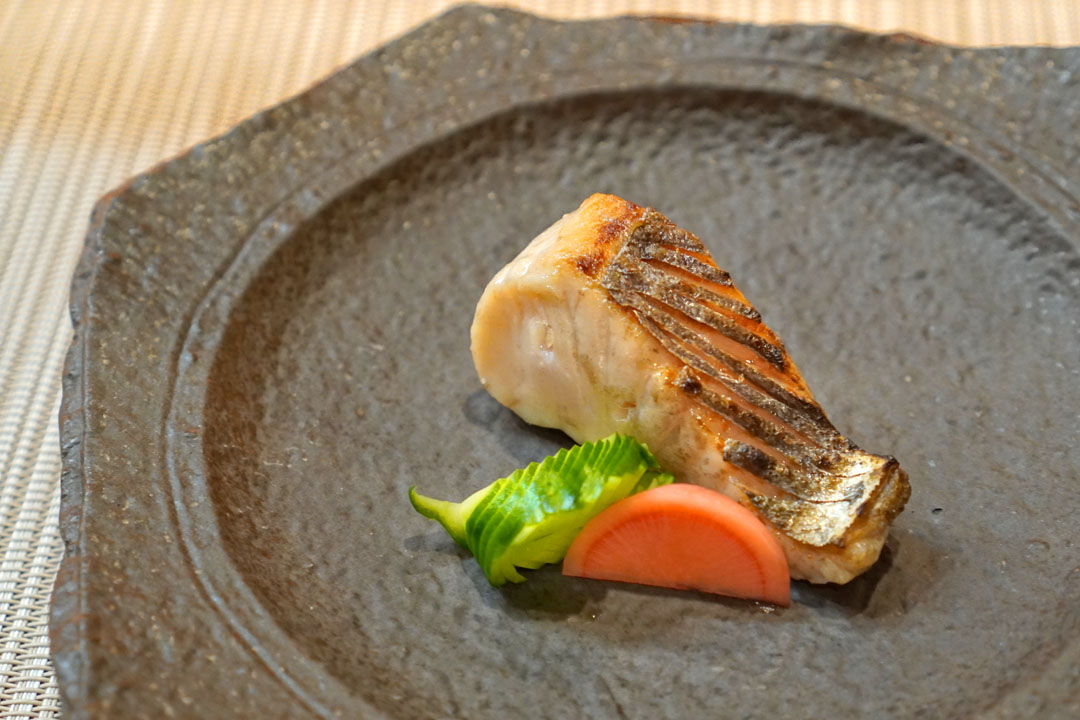
9: 焼物 Grill | grilled sawara
Next up was our yakimono course. King mackerel came out wonderfully smoky and saline, with a satisfying texture to boot, and I really appreciated the brightness imparted by the cucumber and watermelon radish. Another great match with the Selosse.
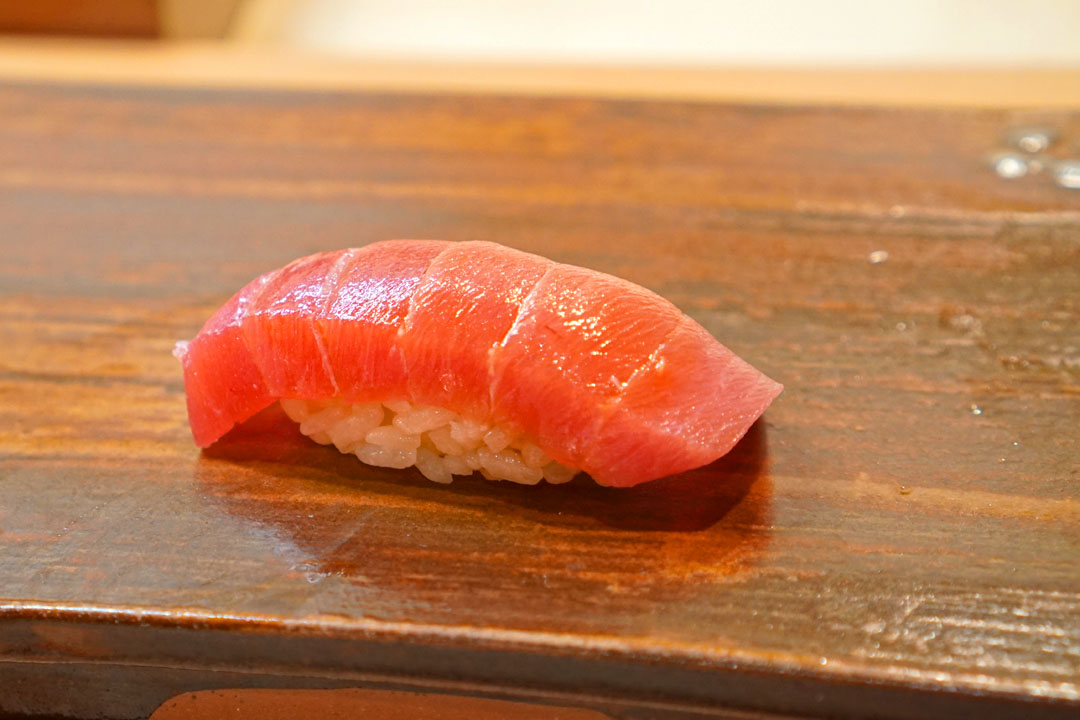
10: 中とろ Chutoro
Getting back to the bluefin, the medium fatty cut of the tuna was aged for six days, and ate fatty, soft, savory, and rich, while the slight tang of the rice made itself known on the finish.
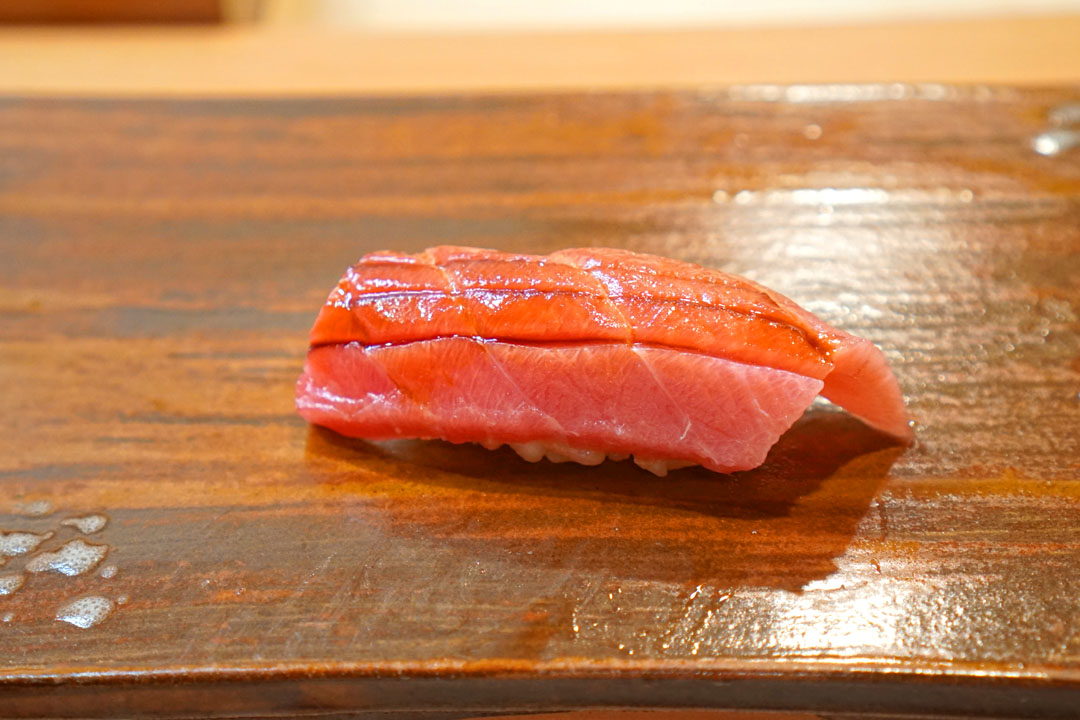
11: 大とろ Otoro
Not surprisingly, the o-toro was the sweetest, lushest, fattiest, meltiest cut of tuna tonight, with an apparent umami character that was only further heightened by the soy sauce. Given the heft of the fish, the sumeshi was absolutely crucial to keep it all in check.
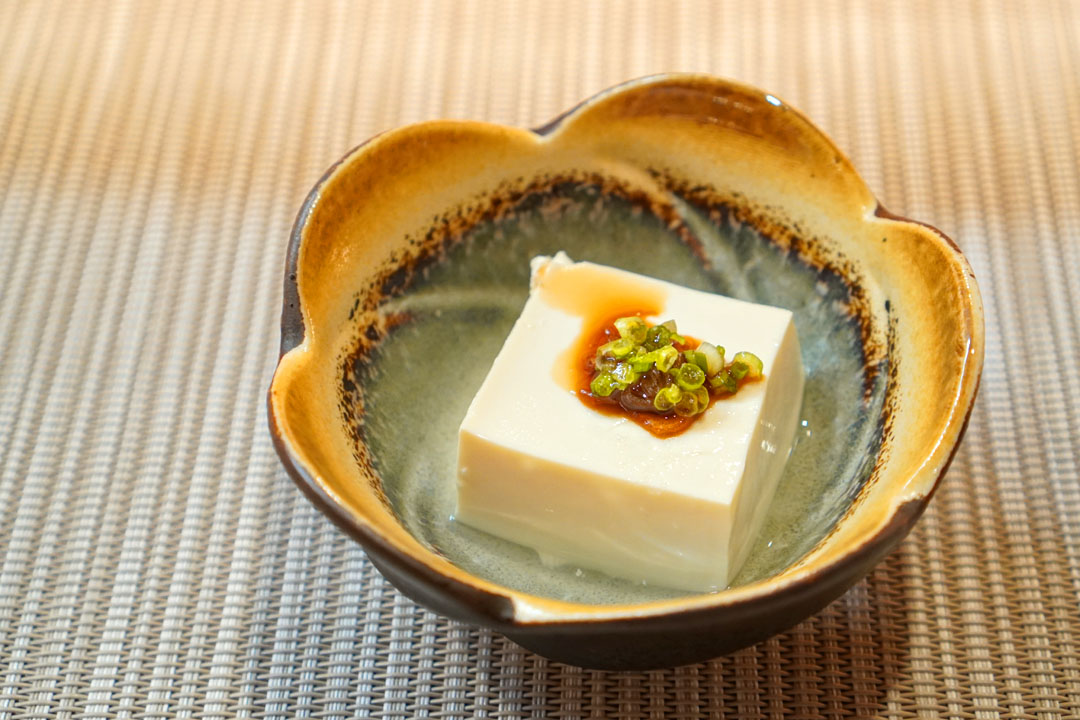
12: 箸休 Palate Cleanser | house made tofu
Hashi-yasume duties were handled by a block of mild, nutty homemade tofu, perfectly garnished with housemade soy, green onion, and Japanese ginger.
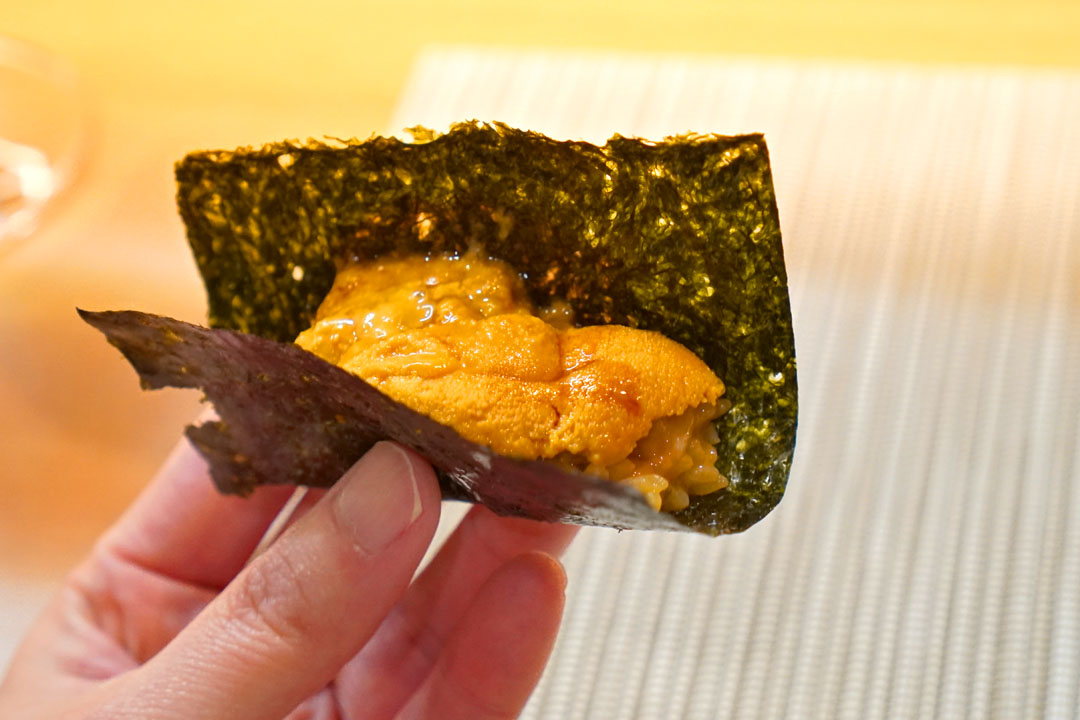
13: 雲丹 Uni
Yoshida-san's sea urchin was of the Hokkaido murasaki variety, and was sourced from well-regarded producer Tachibana Suisan (橘の生うに). The roe showcased a cool, creamy, briny sweetness that combined flawlessly with the grassy savor of that crisp nori. Lovely.
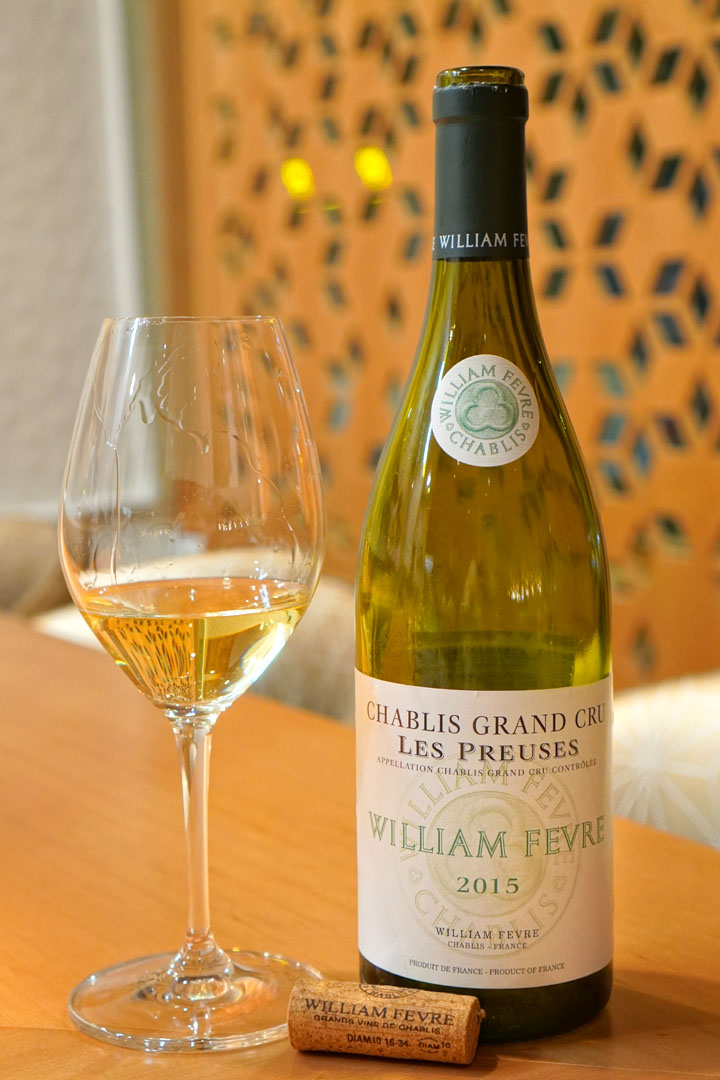
Our second wine was the 2015 William Fevre Chablis Grand Cru Les Preuses. The Burgundy displayed savory, almost hay-like aromas, and actually had this "Japanese dish" character that I couldn't put my finger on. Taking a sip, I got more hay, some greenness, and orchard fruits, all with touches of caramel in the background.
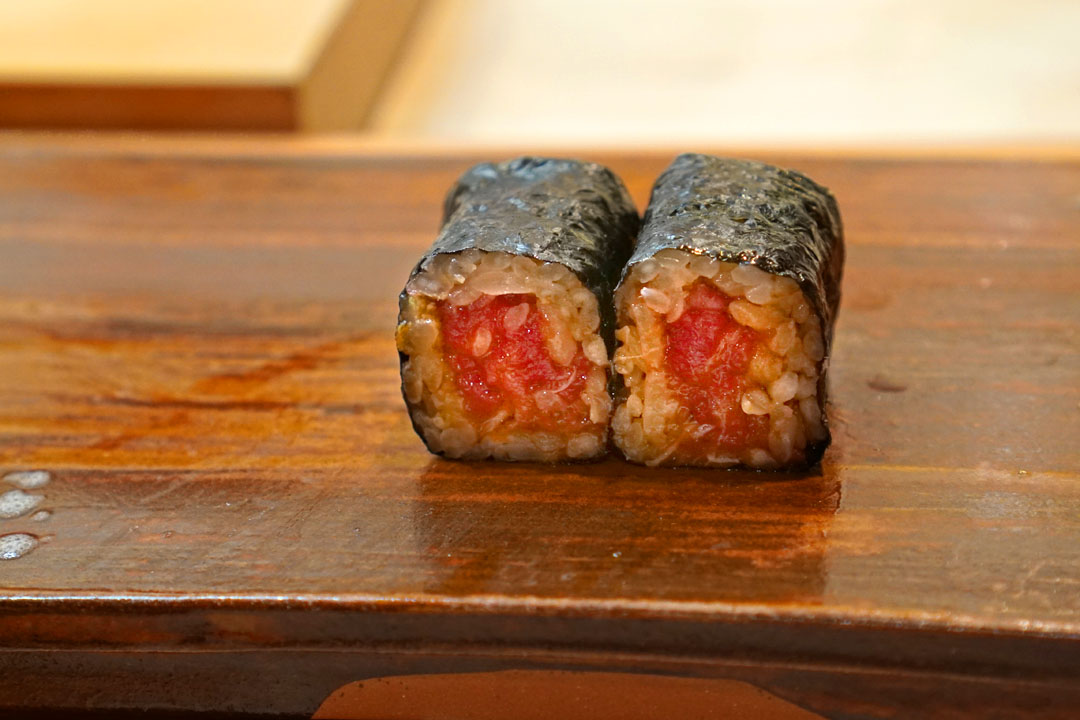
14: ねぎとろ巻 Negitoromaki
The appearance of hosomaki signaled that the end of our meal was near. Here, tuna was seemingly super sweet, and really worked hand in hand with the zestiness of negi, with the rice serving to moderate the interaction.
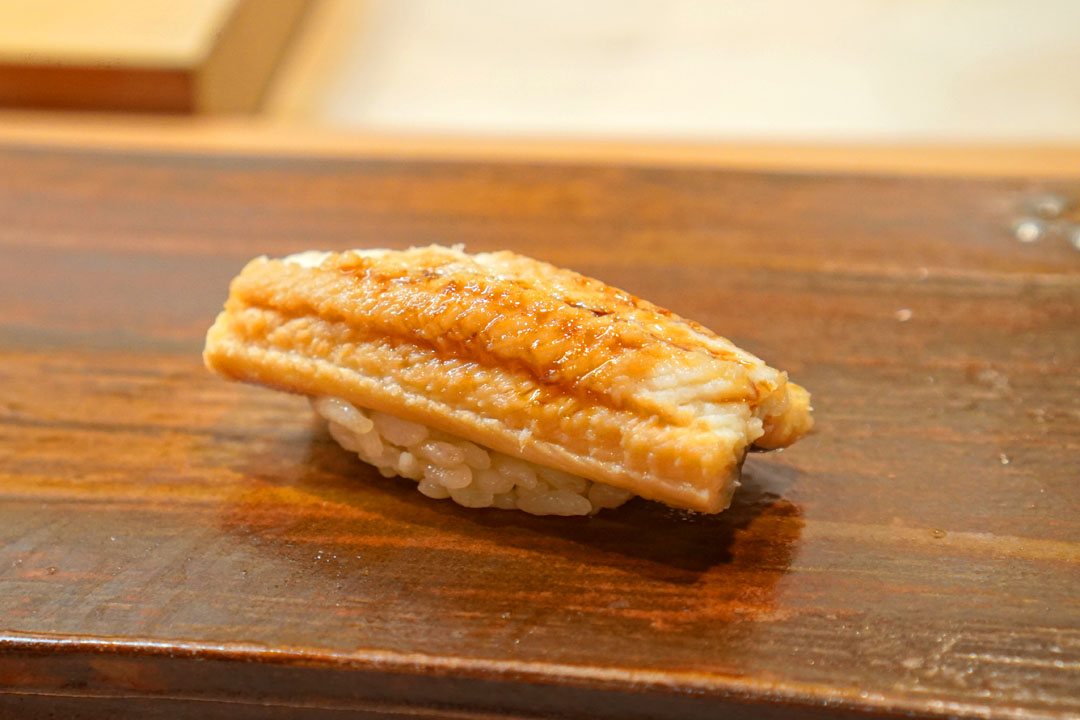
15: 穴子 Anago
Sea eel came out properly soft and savory, its homey, robust flavors offset just enough by the rice.

16: 味噌汁 Misoshiru
The requisite miso soup was richer than most, with a real umami-fueled depth, so all that spring onion was key for balance.

An after-dinner staple, the hojicha was as roasty and nutty as I wanted.
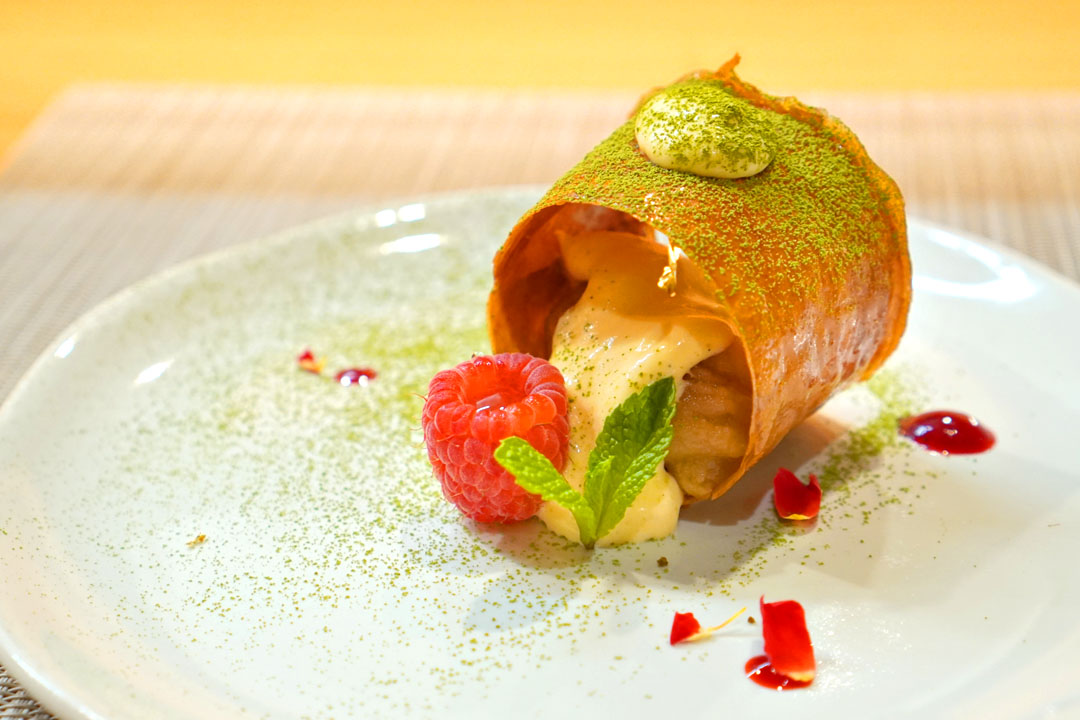
17: 甘味 Dessert | today's special dessert
Our kanmi course was the handiwork of Takaki-san, and comprised apple compote, matcha cookie, and mascarpone cheese cream, all surrounded by crunchy caramel pastry. It was one of the strongest desserts I've had at a Japanese restaurant, its tasty mix of creamy, fruity flavors keenly accented by green tea, with the tuile offering up some textural variation.
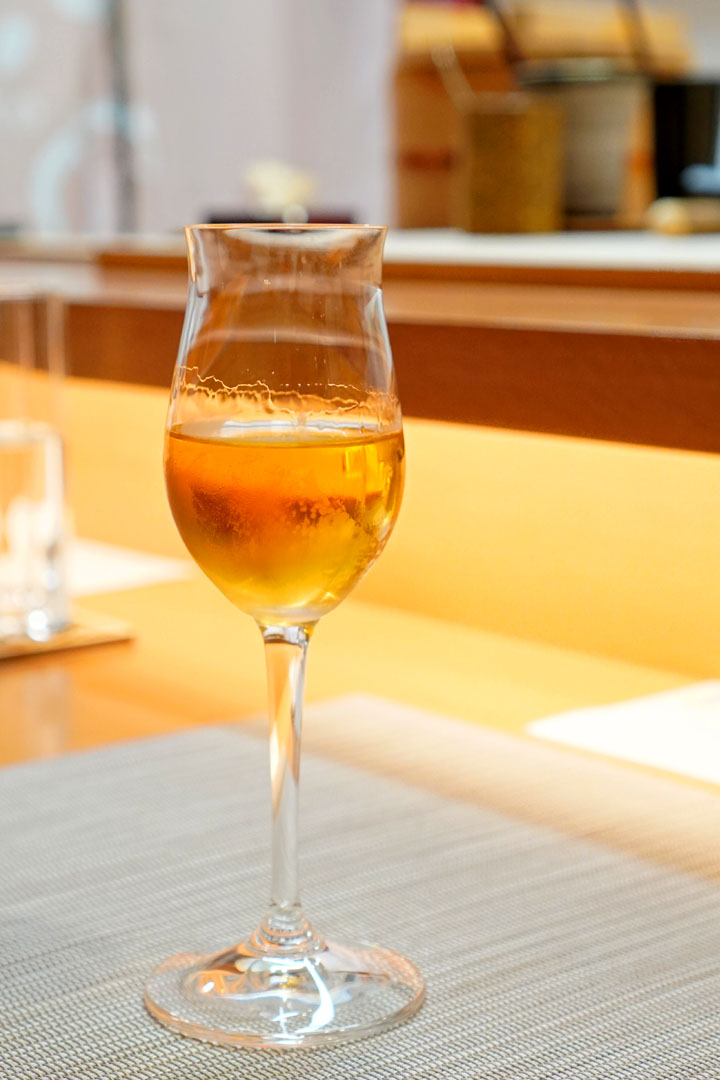
Along with the course above, we also enjoyed a "dessert sake" of sorts, the Masuizumi Oak Aged Kijoshu [$15]. I found it aggressively sweet and nearly toffee-like at times, but with this funk that almost recalled Sauternes in certain sips. Pretty neat.
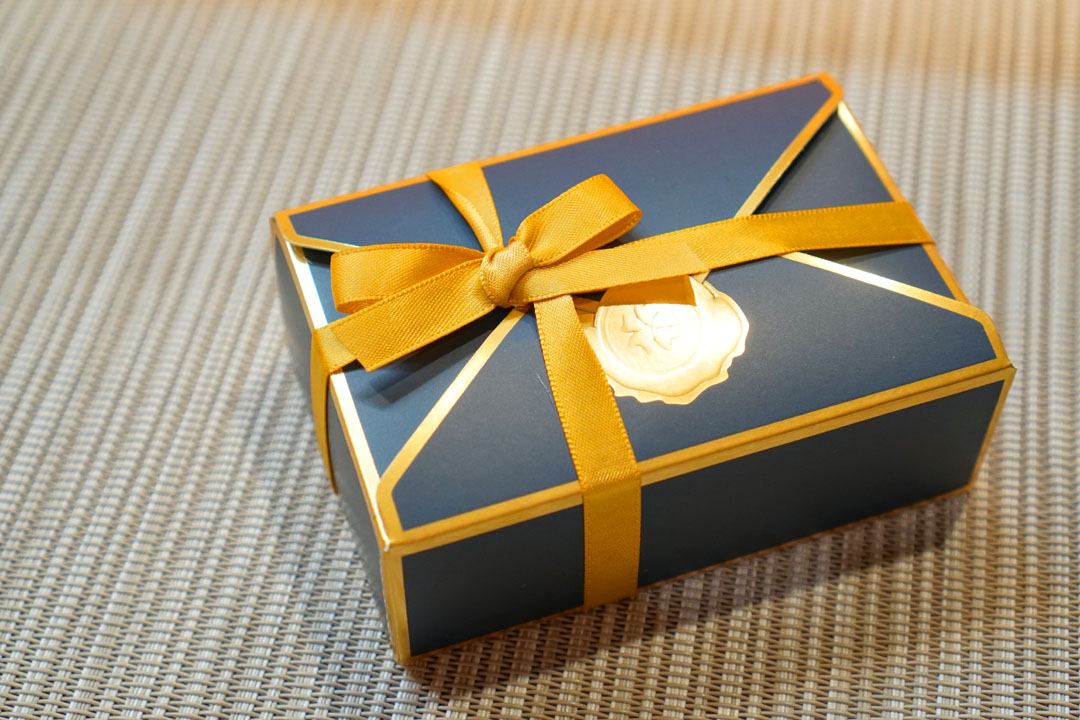
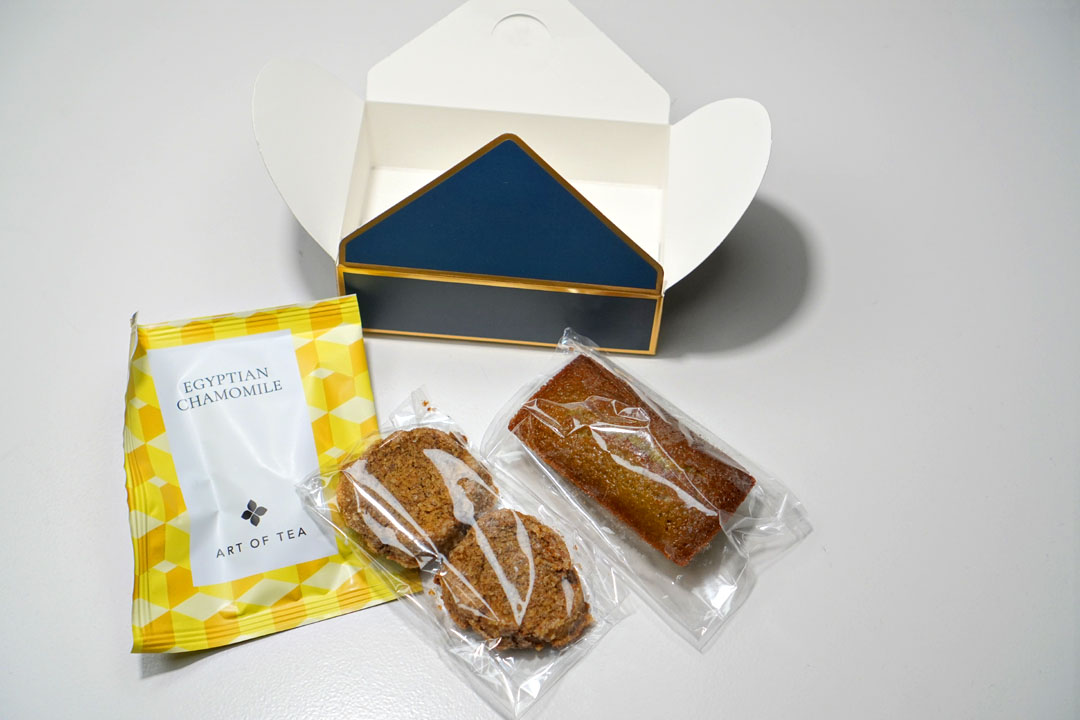
To take home, we were provided some treats (crumbly cookies and a green tea financier) made by Chef Takaki as well as a sachet of Egyptian Chamomile tisane from local producer Art of Tea.
When I first started exploring LA dining, Little Tokyo wasn't where you wanted to be if you were in search of high-end sushi. However, over the past several years, all that's changed, what with the advent of Kaneyoshi, Takeda, Bar Sawa, and 715 (in the Arts District, but close enough). Sakurako is the latest competitor in this landscape, and brings something a bit new to the table. In addition to some great sushi, I was happy with the kaiseki-style dishes we had, which were delicious and kept things interesting. I like the direction that the team is going, and look forward to seeing how the restaurant evolves, so for all you Japanese cuisine fans out there, this is another one to put on your list.
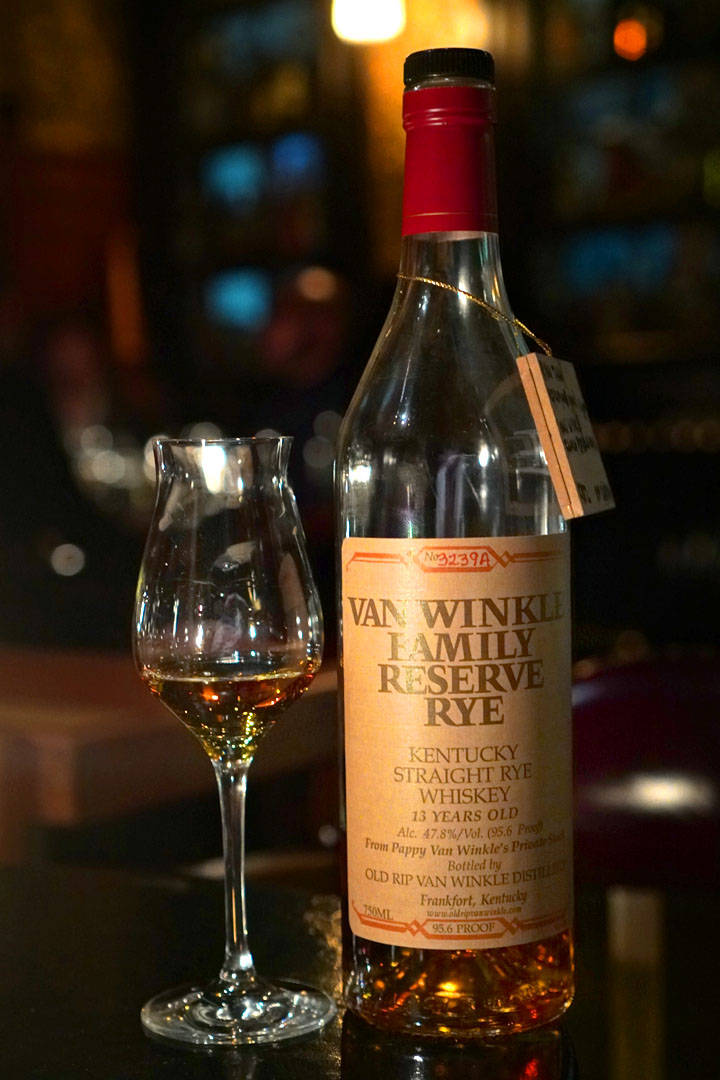
Following dinner, we headed over to Bar Jackalope for some postprandial libations. One of my dining companions is the proud owner of a Van Winkle Family Reserve Rye 13 Year Old kept in a locker there, so that's what we started with. The whiskey was even better than I remembered, with vibrant red fruits on the nose, undergirded by sweet spices. As for the palate, I got scrumptious baking spices and a bit of dusty chocolate, cut by a smidge of medicinal character, finished with astringency and pepperiness.
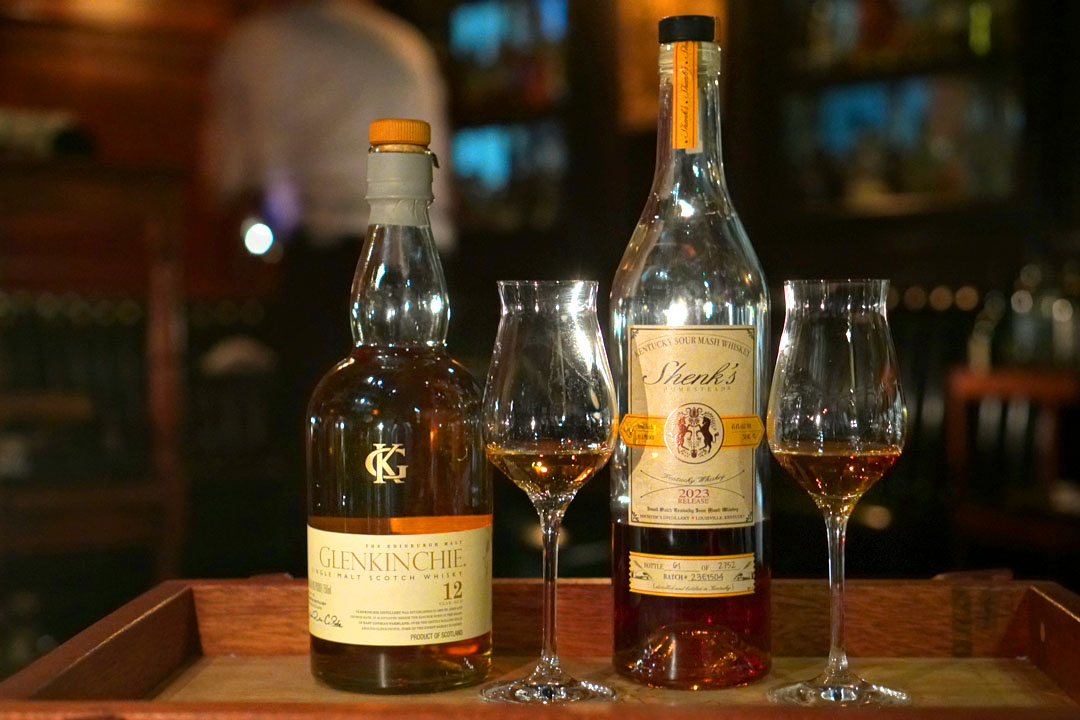
We then moved on to a series of tasting flight pours (20ml), starting with the Glenkinchie 12 Year Old [$8]. In terms of aroma, the Lowland Scotch was super nutty, but with a floral sweetness to it. Taking a sip, I found the whisky quite soft, with plenty of orchard fruits and a healthy amount of oak, commingled with sweet spices and flowers, all in a generally easy-going package. On the other hand, we have the 2023 Shenk's Homestead Sour Mash Kentucky Whiskey [$12]. The bouquet on this one was almost candied, yet a bit oaky and funky at the same time. On the palate, the spirit was on the sharper side, its fruitiness commixed with herb, spice, caramel, and a spine of smoky heat.
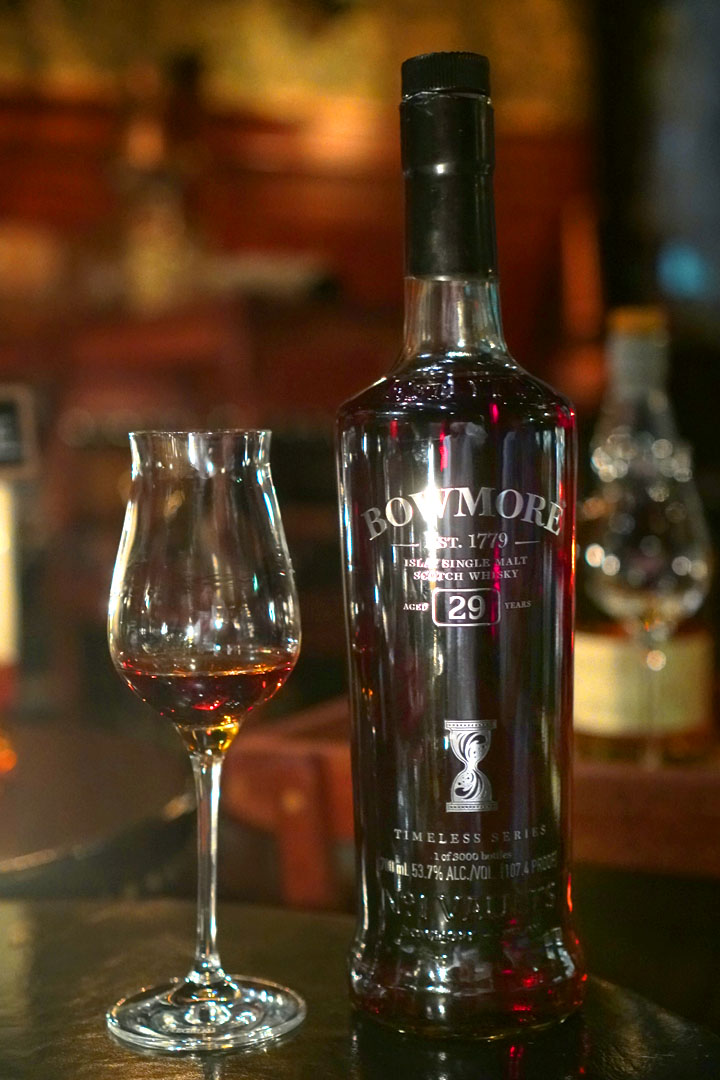
Our next pick was something considerably older, the Bowmore Timeless 29 Year Old [~$243], an Islay single malt crafted from a duet of ex-sherry and ex-bourbon barrels. The nose on this one was decidedly dark-toned and oily, with this candied bacon-like quality overarched by black fruits. Palate-wise, the whisky was dense and viscous, with an assertive smokiness transitioning to sweet, dried fruits and saline. This wowed me a bit.
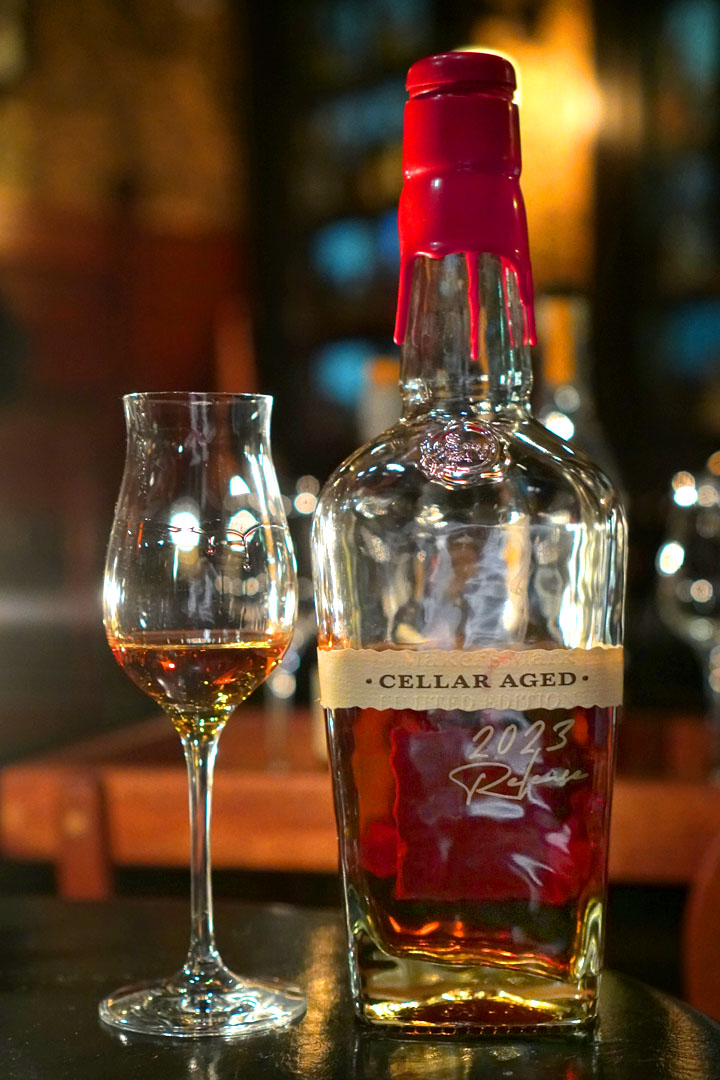
Now we come to the 2023 Maker's Mark Cellar Aged [~$50], a blend of 11- and 12-year-old whiskies bottled at cask strength. The bourbon demonstrated aromas of sugary caramel, barrel, and red fruits, while taste-wise, I found more caramel-y notes alongside dark fruits, sweet spices, and more oakiness. Definitely a step up from your typical Maker's.
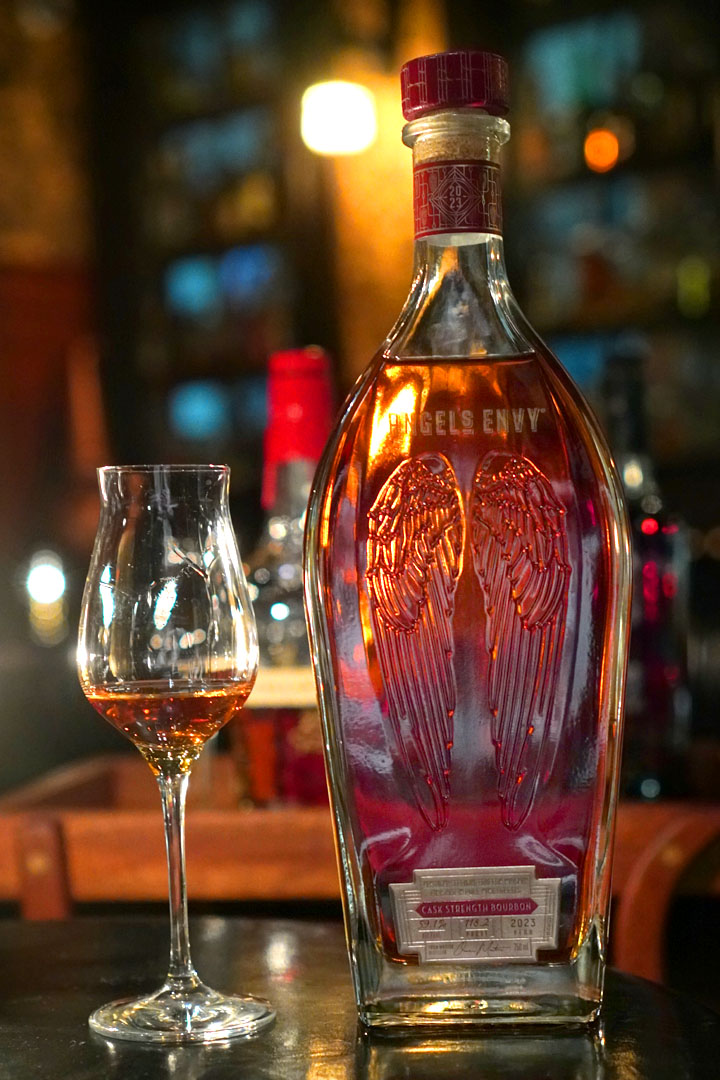
Last was the 2023 Angel's Envy Cask Strength [~$24], a blend of port-finished bourbons. On the nose, the whiskey conveyed dark fruit and vitamins mixed with baking spices, while with regard to taste, think herbal and earthy, with a sweetness recalling vanilla-laced stone fruits.
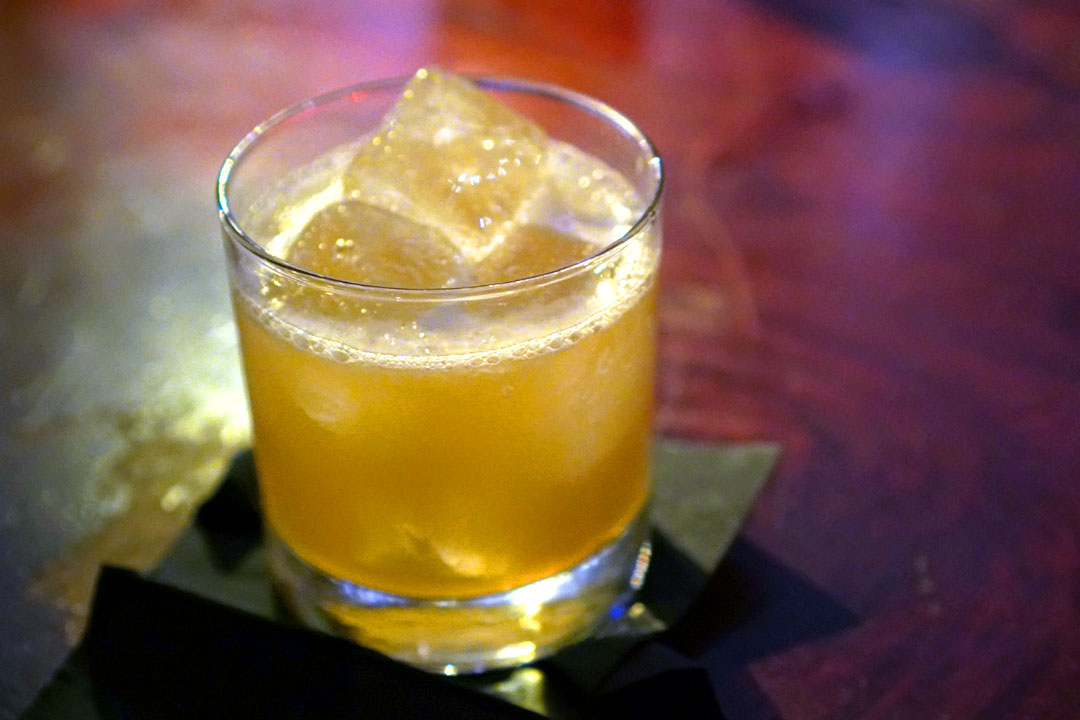
Gold Rush [$15.00] | Bourbon, Fresh Lemon, Honey
A final cocktail from the bar at Seven Grand on the way out.
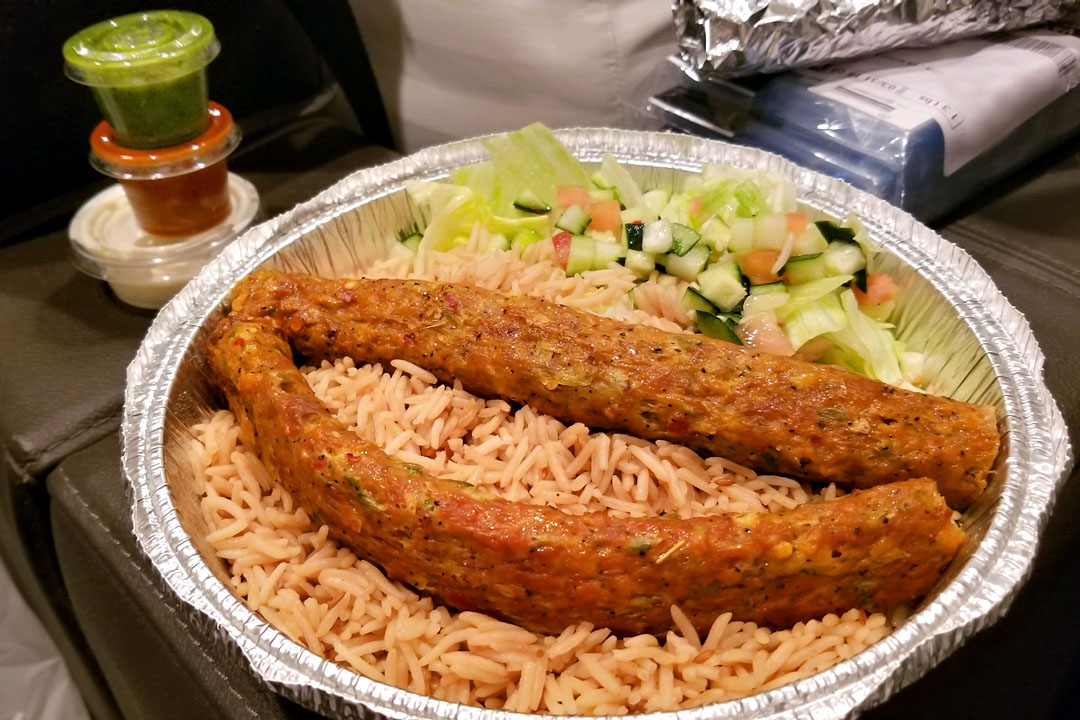
Kofta Kabab Platter [$12.99]
Though I enjoyed the food at Sakurako, the meal was definitely on the shorter side, so I wasn't exactly sated after the dinner. Thus, following drinks at Jackalope, we headed over to Naz's Halal Food for a second round of eating. I opted for the chicken kofta, which wasn't quite as tasty as I was hoping for, coming out drier and tougher than it should've been. I think it's probably best to stick with the standard lamb and chicken options here.
351 E 2nd St, Los Angeles, CA 90012
213-400-6264
www.omakasesakurako.com
Sun 03/31/2024, 07:50p-09:30p

One of the latest entrants to SoCal's upscale Japanese dining scene is Downtown's Omakase Sakurako (おまかせ 桜子), which I'd been wanting to try ever since it grand-opened on November 22nd last year. The place is situated inside the former Japanese Village Plaza home of Komasa, which shuttered in October 2022 after 32 years in business, as owner Minoru Motoyama wanted to retire. Curiously, Sakurako is owned by none other than Kimiyasu Enya of Sushi Enya fame. However, you won't see him behind the counter here. Rather, the place is helmed by Head Chef Akira Yoshida, with support from Master Chef Tatsuki Kurogi and Pastry Chef Shota Takaki.
About the Chefs: Yoshida Akira was born in September 1996, and began his culinary career at the age of 18 at a sushi spot in Saitama. From there, he worked his way around several sushi-ya and tempura-ya in Japan, then relocated to Germany in early 2019 to join the team at The Sakai in Frankfurt. However, the place closed temporarily due to the pandemic, and during this period, Yoshida found employment at the much more casual Sakura Sushi Café. He ended up returning to Japan in November 2020, but eventually decided to move to the US, arriving in LA in October 2022. The motivation for the move was so that he could run Sakurako, but before the restaurant could open, he did work at Enya locations in both Pasadena and Beverly Grove.
Kurogi Tatsuki, meanwhile, started cooking when he was 16, inspired by his father, who was also a chef. He spent most of his career at kaiseki and kappo restaurants in the Kyoto and Osaka area, and most notably, trained at Naniwa Kappo Kigawa and the Nadaman outpost at Teikokuhoteru Osaka. Finally, we have Takaki Shota, who commenced his French pastry training at the age of 18, and worked for around a decade in Kumamoto as a pâtissier.



Sakurako's sushi-centric menu was priced at $250 a head, with a $100 deposit required on Tock. The night's omakase is pictured above (a printed menu is a nice touch that more places should implement), along with the restaurant's small selection of beer, wine, and sake. Corkage was $80 a pop. Click for larger versions.

Here we see the place setting, replete with an oshibori that was nicer than most.

1: 先付 Amuse | chef's seasonal special
Our meal kicked off with a quartet of sakizuke, courtesy of Kurogi-san. I began with the octopus, which ate soft and savory, with a fantastic counterpoint in the form of the yuzukosho's sour-spicy punch. Next were cuts of sweet, springy shrimp, paired with bitter mizuna and a wonderfully tangy mustard sauce. Third was the hotaruika, supple, squishy, subtly saline firefly squid that were perked up by a super zingy sumiso sauce and the heat of wasabi. Finally, we had a classically rich, creamy ankimo, set against traditional accoutrements of ponzu and grated daikon. Overall, quite a promising start.

With the appetizers dispensed with, our geta were christened with some ginger.

2: 春子鯛 Kasugodai
Young sea bream is a signifier of the spring season, so it felt very appropriate to start with it tonight. I loved its soft yet "snappy" consistency, while the fish's subdued sweetness was paired with the potent sting of wasabi and the savoriness of shari on the back end.

To drink, we brought along a bottle of the Jacques Selosse V.O. Blanc de Blancs Extra Brut. The Champagne had a glorious nose filled with rich, concentrated orchard fruits and just a slight tinge of funk. On the palate, I found the wine oxidative and distinctly nutty, but with a touch of toffee and a palpable base of yellow fruits that only got more intense as the bubbly warmed. Delicious, and of the best sparklers I've had in a while.

3: 烏賊 Ika
Japanese squid showed off a gratifyingly dense-yet-yielding texture, and was smartly accented by pinpricks of salt.

A wetted napkin was provided, as we were encouraged to use our fingers for the nigiri.

4: 平目 Hirame
Wild halibut had a tender, but still substantial mouthfeel, along with a great nuttiness that made a lot of sense with the rice's vinegary tang.

5: 吸物 Soup | Bamboo shoot & wakame
Our suimono course presented a clear soup loaded with briny sheets of wakame and cuts of delightfully crunchy Kagoshima bamboo. The dish was accented by the pepperiness of kinome, which paired especially well with the Champagne above.

6: 赤身 Akami
Bluefin from Miyagi Prefecture was used for all our tuna courses tonight. We started with this soft, slick cut of red meat, which was teeming with plenty of umami, so the contrast offered up by the sushi rice was much appreciated.

7: 鯵 Aji
The mackerel was a favorite of mine. I was a big fan of the fish's firm, almost crunchy mouthfeel, while its refined brine married perfectly with its zesty topping of grated onion-ginger juice.

For our second beverage, we chose something off Sakurako's sake list, the 百黙 Hyakumoku Future [$350], a Yamadanishiki-based, 35% seimai-buai junmai daiginjo from Hyogo Prefecture's Kiku-Masamune Shuzo. Aromas recalled candied tropical fruits, but offset by a shiso-like freshness that I quite fancied. In terms of taste, I found bubblegum-y notes, but with a spicy backbone and further elements of rich, ricey umami. An apt pairing with the food.

8: 刺身 Sashimi | red snapper
The sashimi was pretty stellar, the tai arriving silky smooth, its delicate flavors joined by bitter greens, shiso flowers, and a tangy ume dressing.

9: 焼物 Grill | grilled sawara
Next up was our yakimono course. King mackerel came out wonderfully smoky and saline, with a satisfying texture to boot, and I really appreciated the brightness imparted by the cucumber and watermelon radish. Another great match with the Selosse.

10: 中とろ Chutoro
Getting back to the bluefin, the medium fatty cut of the tuna was aged for six days, and ate fatty, soft, savory, and rich, while the slight tang of the rice made itself known on the finish.

11: 大とろ Otoro
Not surprisingly, the o-toro was the sweetest, lushest, fattiest, meltiest cut of tuna tonight, with an apparent umami character that was only further heightened by the soy sauce. Given the heft of the fish, the sumeshi was absolutely crucial to keep it all in check.

12: 箸休 Palate Cleanser | house made tofu
Hashi-yasume duties were handled by a block of mild, nutty homemade tofu, perfectly garnished with housemade soy, green onion, and Japanese ginger.

13: 雲丹 Uni
Yoshida-san's sea urchin was of the Hokkaido murasaki variety, and was sourced from well-regarded producer Tachibana Suisan (橘の生うに). The roe showcased a cool, creamy, briny sweetness that combined flawlessly with the grassy savor of that crisp nori. Lovely.

Our second wine was the 2015 William Fevre Chablis Grand Cru Les Preuses. The Burgundy displayed savory, almost hay-like aromas, and actually had this "Japanese dish" character that I couldn't put my finger on. Taking a sip, I got more hay, some greenness, and orchard fruits, all with touches of caramel in the background.

14: ねぎとろ巻 Negitoromaki
The appearance of hosomaki signaled that the end of our meal was near. Here, tuna was seemingly super sweet, and really worked hand in hand with the zestiness of negi, with the rice serving to moderate the interaction.

15: 穴子 Anago
Sea eel came out properly soft and savory, its homey, robust flavors offset just enough by the rice.

16: 味噌汁 Misoshiru
The requisite miso soup was richer than most, with a real umami-fueled depth, so all that spring onion was key for balance.

An after-dinner staple, the hojicha was as roasty and nutty as I wanted.

17: 甘味 Dessert | today's special dessert
Our kanmi course was the handiwork of Takaki-san, and comprised apple compote, matcha cookie, and mascarpone cheese cream, all surrounded by crunchy caramel pastry. It was one of the strongest desserts I've had at a Japanese restaurant, its tasty mix of creamy, fruity flavors keenly accented by green tea, with the tuile offering up some textural variation.

Along with the course above, we also enjoyed a "dessert sake" of sorts, the Masuizumi Oak Aged Kijoshu [$15]. I found it aggressively sweet and nearly toffee-like at times, but with this funk that almost recalled Sauternes in certain sips. Pretty neat.


To take home, we were provided some treats (crumbly cookies and a green tea financier) made by Chef Takaki as well as a sachet of Egyptian Chamomile tisane from local producer Art of Tea.
When I first started exploring LA dining, Little Tokyo wasn't where you wanted to be if you were in search of high-end sushi. However, over the past several years, all that's changed, what with the advent of Kaneyoshi, Takeda, Bar Sawa, and 715 (in the Arts District, but close enough). Sakurako is the latest competitor in this landscape, and brings something a bit new to the table. In addition to some great sushi, I was happy with the kaiseki-style dishes we had, which were delicious and kept things interesting. I like the direction that the team is going, and look forward to seeing how the restaurant evolves, so for all you Japanese cuisine fans out there, this is another one to put on your list.

Following dinner, we headed over to Bar Jackalope for some postprandial libations. One of my dining companions is the proud owner of a Van Winkle Family Reserve Rye 13 Year Old kept in a locker there, so that's what we started with. The whiskey was even better than I remembered, with vibrant red fruits on the nose, undergirded by sweet spices. As for the palate, I got scrumptious baking spices and a bit of dusty chocolate, cut by a smidge of medicinal character, finished with astringency and pepperiness.

We then moved on to a series of tasting flight pours (20ml), starting with the Glenkinchie 12 Year Old [$8]. In terms of aroma, the Lowland Scotch was super nutty, but with a floral sweetness to it. Taking a sip, I found the whisky quite soft, with plenty of orchard fruits and a healthy amount of oak, commingled with sweet spices and flowers, all in a generally easy-going package. On the other hand, we have the 2023 Shenk's Homestead Sour Mash Kentucky Whiskey [$12]. The bouquet on this one was almost candied, yet a bit oaky and funky at the same time. On the palate, the spirit was on the sharper side, its fruitiness commixed with herb, spice, caramel, and a spine of smoky heat.

Our next pick was something considerably older, the Bowmore Timeless 29 Year Old [~$243], an Islay single malt crafted from a duet of ex-sherry and ex-bourbon barrels. The nose on this one was decidedly dark-toned and oily, with this candied bacon-like quality overarched by black fruits. Palate-wise, the whisky was dense and viscous, with an assertive smokiness transitioning to sweet, dried fruits and saline. This wowed me a bit.

Now we come to the 2023 Maker's Mark Cellar Aged [~$50], a blend of 11- and 12-year-old whiskies bottled at cask strength. The bourbon demonstrated aromas of sugary caramel, barrel, and red fruits, while taste-wise, I found more caramel-y notes alongside dark fruits, sweet spices, and more oakiness. Definitely a step up from your typical Maker's.

Last was the 2023 Angel's Envy Cask Strength [~$24], a blend of port-finished bourbons. On the nose, the whiskey conveyed dark fruit and vitamins mixed with baking spices, while with regard to taste, think herbal and earthy, with a sweetness recalling vanilla-laced stone fruits.

Gold Rush [$15.00] | Bourbon, Fresh Lemon, Honey
A final cocktail from the bar at Seven Grand on the way out.

Kofta Kabab Platter [$12.99]
Though I enjoyed the food at Sakurako, the meal was definitely on the shorter side, so I wasn't exactly sated after the dinner. Thus, following drinks at Jackalope, we headed over to Naz's Halal Food for a second round of eating. I opted for the chicken kofta, which wasn't quite as tasty as I was hoping for, coming out drier and tougher than it should've been. I think it's probably best to stick with the standard lamb and chicken options here.
0 Comments:
Post a Comment
Subscribe to Post Comments [Atom]
<< Home